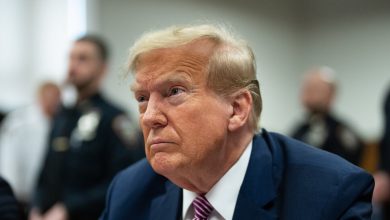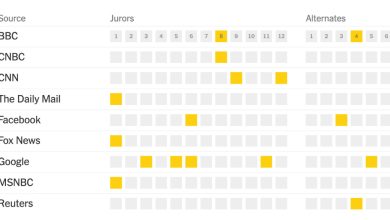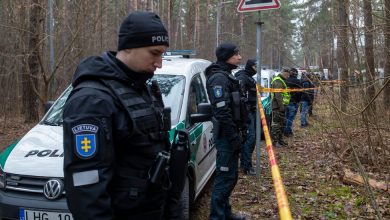When the Soviets Set Off the Biggest Nuclear Bomb, J.F.K. Didn’t Flinch

Sixty years ago on Saturday, the Soviet Union detonated the world’s most powerful nuclear weapon, with a force 3,333 times that of the bomb used on Hiroshima. As the device shattered all records, it sent shock waves through the American defense establishment: How should the United States respond? Did the nation need bigger, more destructive arms? Was it wise to do nothing? What was the best way to protect the nation from the deadly stirrings of a belligerent foe?
American policymakers now face similar questions as bold rivals pursue novel delivery systems for their nuclear arms. A new study, based on recently declassified documents, offers insights into how an earlier president resolved a comparable dilemma. The report shows that the secret debate over what to do about the unprecedented Soviet blast was ended by President John F. Kennedy. He chose not only to ignore the military’s appeals for deadlier arms, but to sponsor and sign an East-West treaty that precluded more superweapons.
“It went all the way to the top,” Alex Wellerstein, a nuclear historian at the Stevens Institute of Technology in Hoboken, N.J., and the study’s author, said in an interview. “It’s clear that Kennedy was on the fence. But he decided not to go in the bomb direction.”
Andrew Cohen, author of “Two Days in June: John F. Kennedy and the 48 Hours That Made History,” said in an interview that Dr. Wellerstein reveals “an untold story that’s terrifying, sobering and illuminating.” Mr. Cohen’s book lays out the president’s 1963 pivot to diplomacy that helped make the groundbreaking arms treaty possible. He added that disclosure of Kennedy’s calculated nonresponse to the pushy clamor showed his “deep revulsion for nuclear weapons.”
The explosive force of the Soviet device — nicknamed Tsar Bomba, or the Tsar’s bomb, and set off on Oct. 30, 1961 — was 50 megatons, or equal to 50 million tons of conventional explosives. Last year, the Russian nuclear energy agency, Rosatom, released a 30-minute, formerly secret documentary video that showed preparation and detonation of the mega-weapon. The blinding flash and churning mushroom cloud hinted at its gargantuan force. Its radioactivity shot into the stratosphere and circled the globe for years.
In his study, published on Friday in the Bulletin of the Atomic Scientists, Dr. Wellerstein shows that the Soviets were not the only nuclear power to contemplate such astonishing explosives; the United States had long prepared in secret to go down the same path.
By definition, the American plans for unthinkable arms focused on hydrogen bombs, which in the years after World War II flashed to life at a level about 1,000 times as destructive as the nuclear weapons dropped on Japan.Making more potent ones required trial-and-error testing that identified problems and let bomb designers devise fixes and workarounds.
Dr. Wellerstein quotes Edward Teller, a main architect of the hydrogen bomb, as announcing at a 1954 meeting of the Atomic Energy Commission that his laboratory was working on two superbomb designs. One would be 1,000 megatons — or 20 times as powerful as the planet shaker the Soviets would come to detonate in 1961. The other would be 10,000 megatons, or 200 times as destructive.
Scientists at the secret meeting “were ‘shocked’ by his proposal,” Dr. Wellerstein writes, citing an official record. “Most of Teller’s testimony remains classified to this day,” he adds.
The lobbying intensified as the military added its voice. In 1958, the Air Force chief of staff called for a study of weapons up to 1,000 megatons, Dr. Wellerstein notes. A once-secret Air Force history said enthusiasm for the giant weapon cooled as the study found that “lethal radioactivity might not be contained within the confines of an enemy state.”
By January 1961, when Kennedy took office, plans for a lesser superbomb had grown more detailed. Dr. Wellerstein reports that the new president was told that a 100-megaton weapon would be six feet wide and 12 feet long — easy for a large bomber to carry and drop.
The detonation of Tsar Bomba in October 1961 gave the issue new urgency. Dr. Wellerstein quotes a scientist at the Sandia weapons lab — one of the nation’s three design centers for nuclear arms — as declaring that the American military wanted superbombs “even though no known targets justify such weapons.”
In late 1962, Dr. Wellerstein states, the defense secretary, Robert S. McNamara, was informed that the Atomic Energy Commission was ready to build the American equivalent of a Tsar Bomba. The commission reported that experimental devices would be ready for explosive testing by the end of 1963.
That year, President Kennedy came to see a way out of the looming arms race. To end surges of deadly radiation from atmospheric testing and the ensuing waves of cancer and other maladies for people downwind, the government’s nuclear experts had learned how to explode their devices underground in Nevada.
The rocky ground could bottle up relatively small bursts, but not those of the superbombs, whose vast energies and miles-wide fireballs would burn and break through hard rock to heave radiation into the air. The Nevada site conducted below-ground weapon tests until, with the Cold War’s demise, the long series ended in 1991.
In June 1963, Kennedy laid out his vision for a partial test ban treaty with the Soviets that would limit nuclear testing to underground sites.
“I now declare,” he said in a speech at American University, “that the United States does not propose to conduct nuclear tests in the atmosphere so long as other states do not do so.” His declaration, he added, “is no substitute for a formal binding treaty, but I hope it will help us achieve one.”
It did. A treaty with Moscow was negotiated and ratified by the Senate. On Oct. 7, 1963, Kennedy signed it, bringing the accord into force. “For the first time,” he said, “we have been able to reach an agreement which can limit the dangers of this age.”
Forty-six days later, a sniper’s bullet brought the Kennedy era to an end. But the global rejection of atmospheric testing in large part held, consigning many hundreds of nuclear blasts to the netherworld. Russia never broke the treaty. France and China never signed, and conducted their last atmospheric tests in 1974 and 1980. India, Pakistan and North Korea conducted all their nuclear tests underground.
“It became the norm,” Dr. Wellerstein said of the subterranean approach, “and so did smaller warheads.”
If the would-be era of superbombs is now forgotten and unfamiliar, he said, it’s important to remember as an object lesson in how ridiculously dangerous the nuclear arms race had once threatened to become.
“The Tsar Bomba is dead,” Dr. Wellerstein said in his study. “Long live the Tsar Bomba.”



